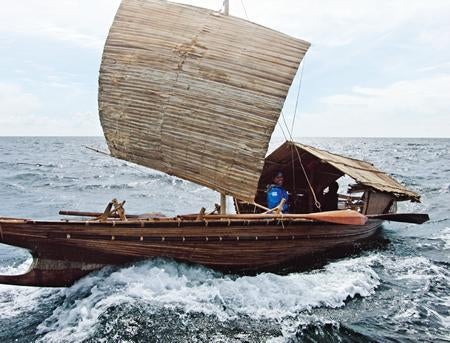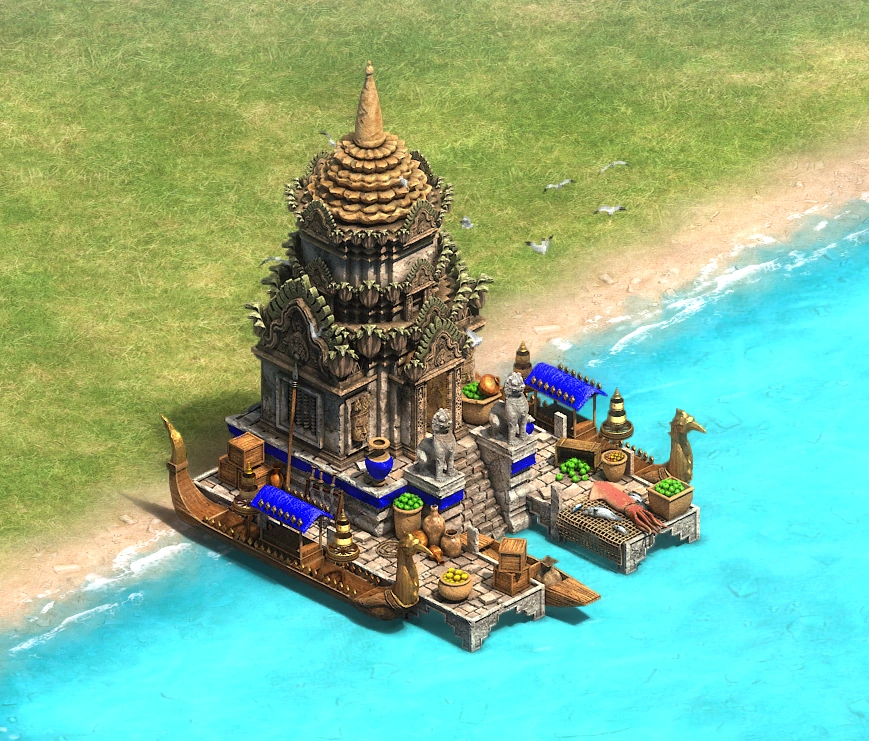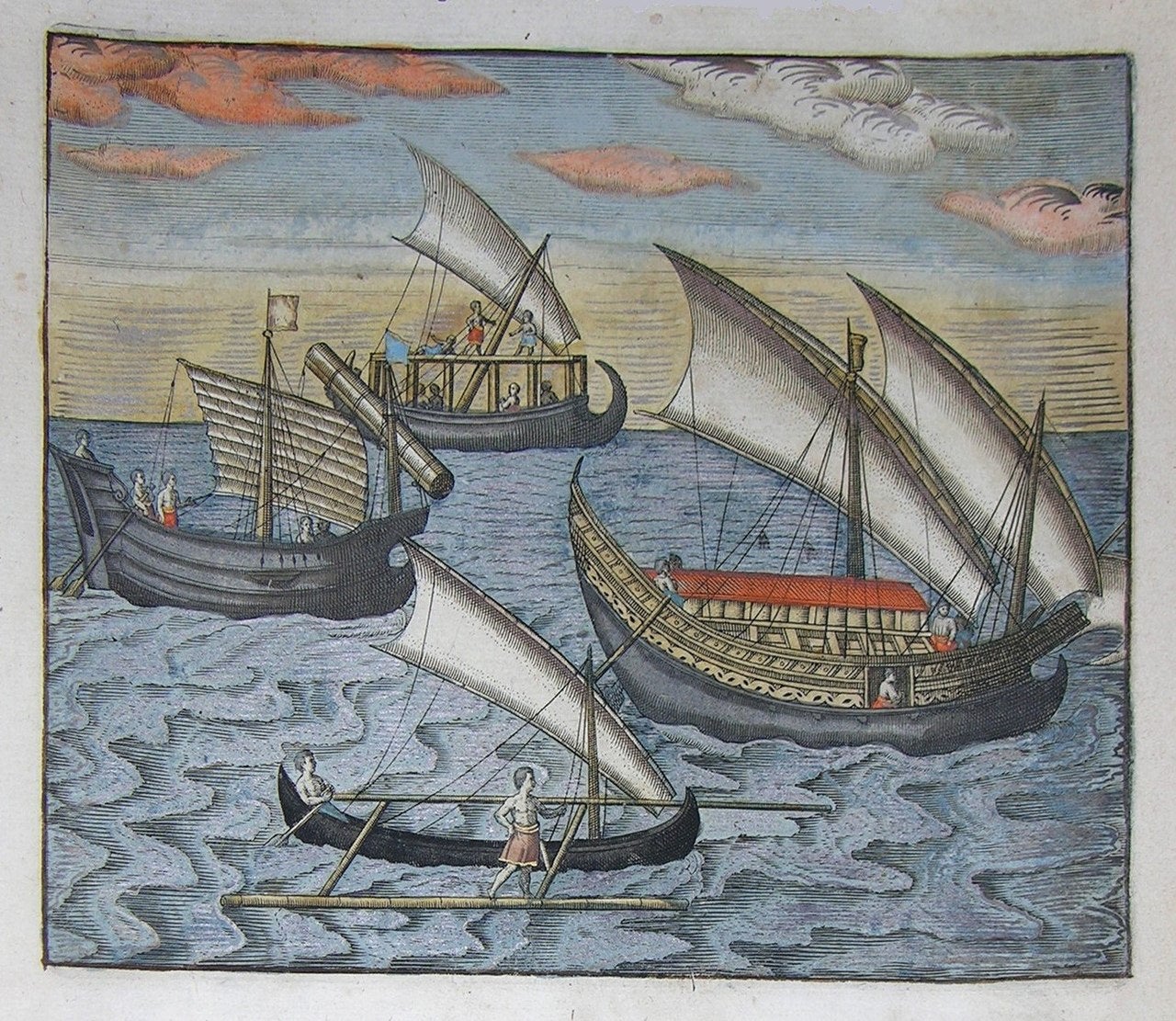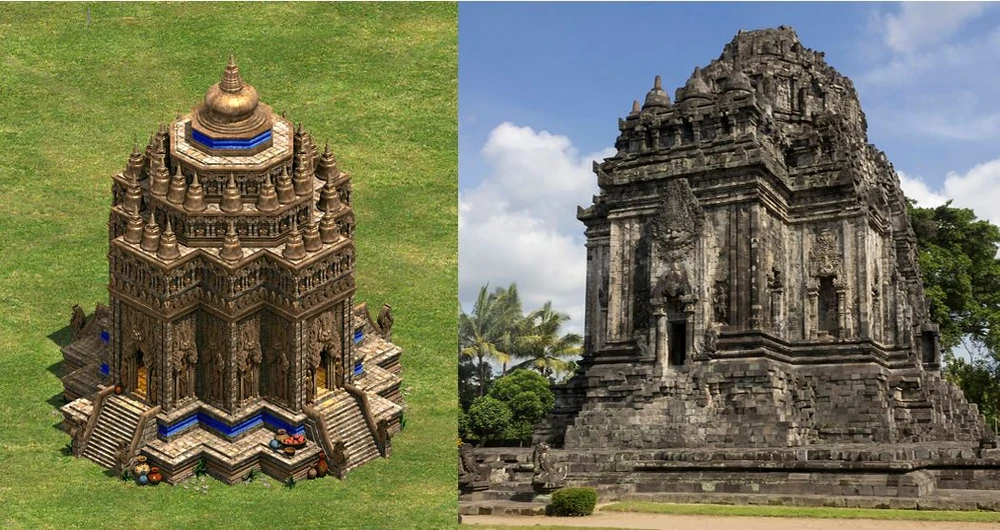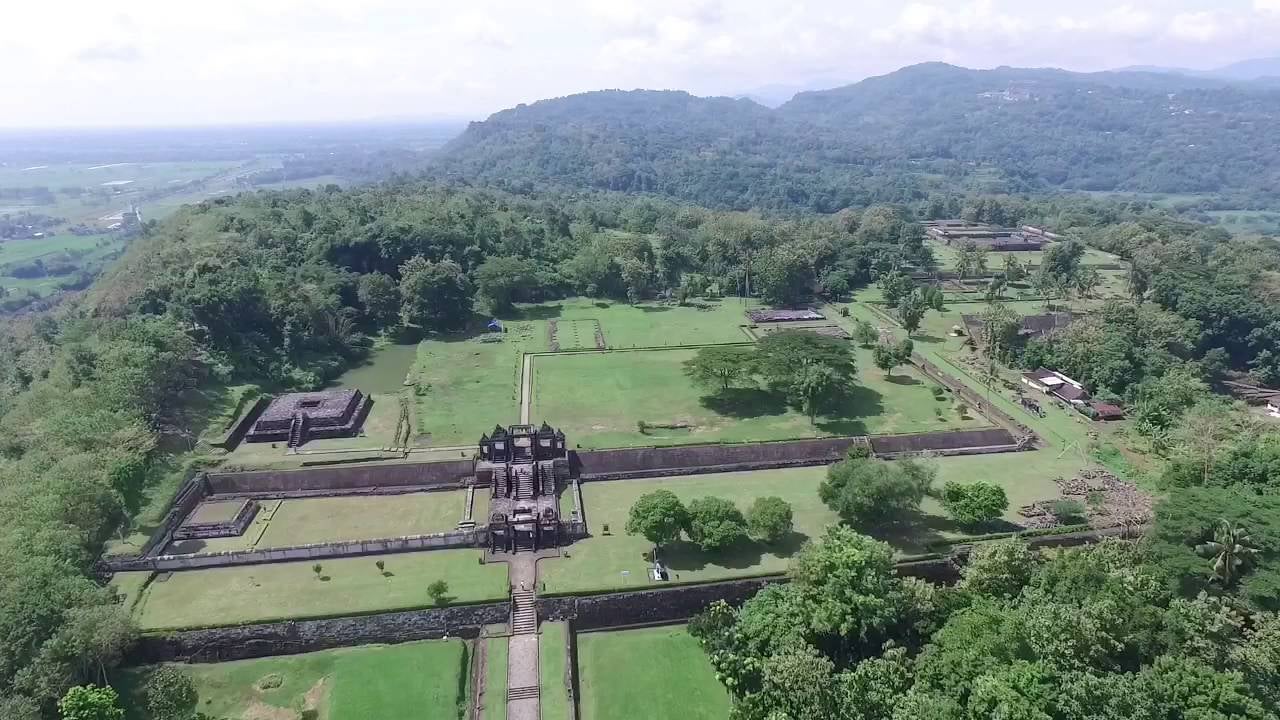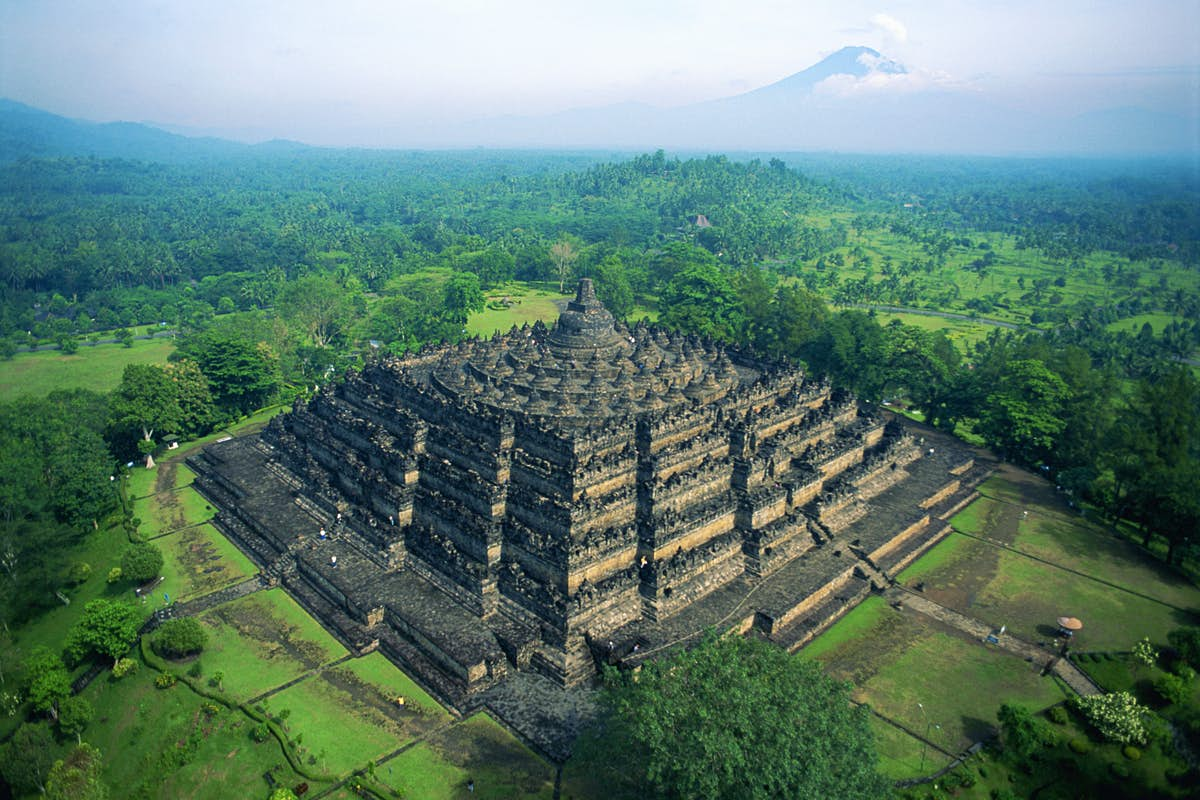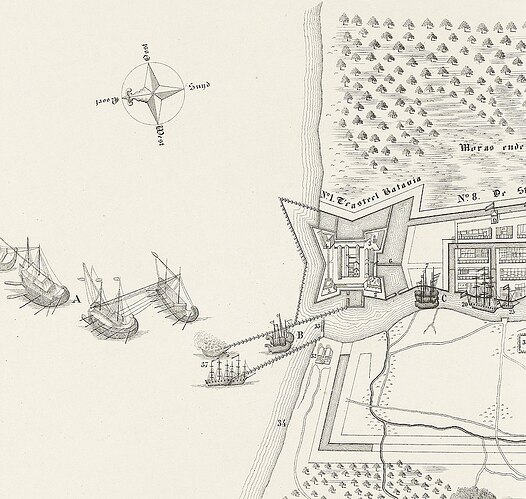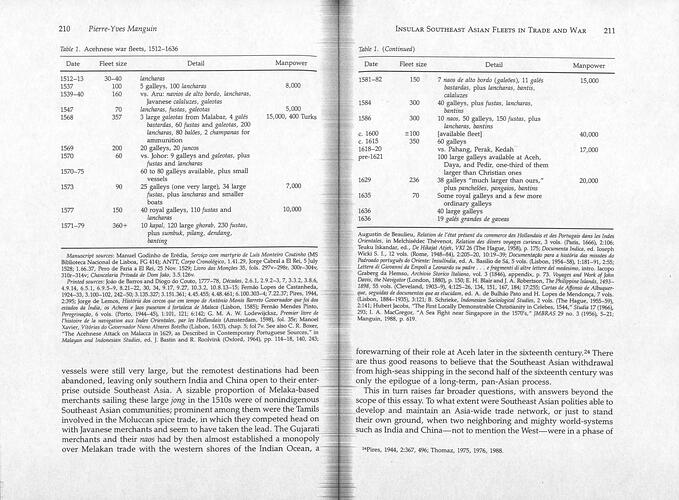Finally done with this! Took way longer than I first expected, as there was a lot of reading to be done. But also I had to redo the entire draft! Please tell me what you think! (Just remember these are just guidelines, and can always be adjusted!)
Majapahit
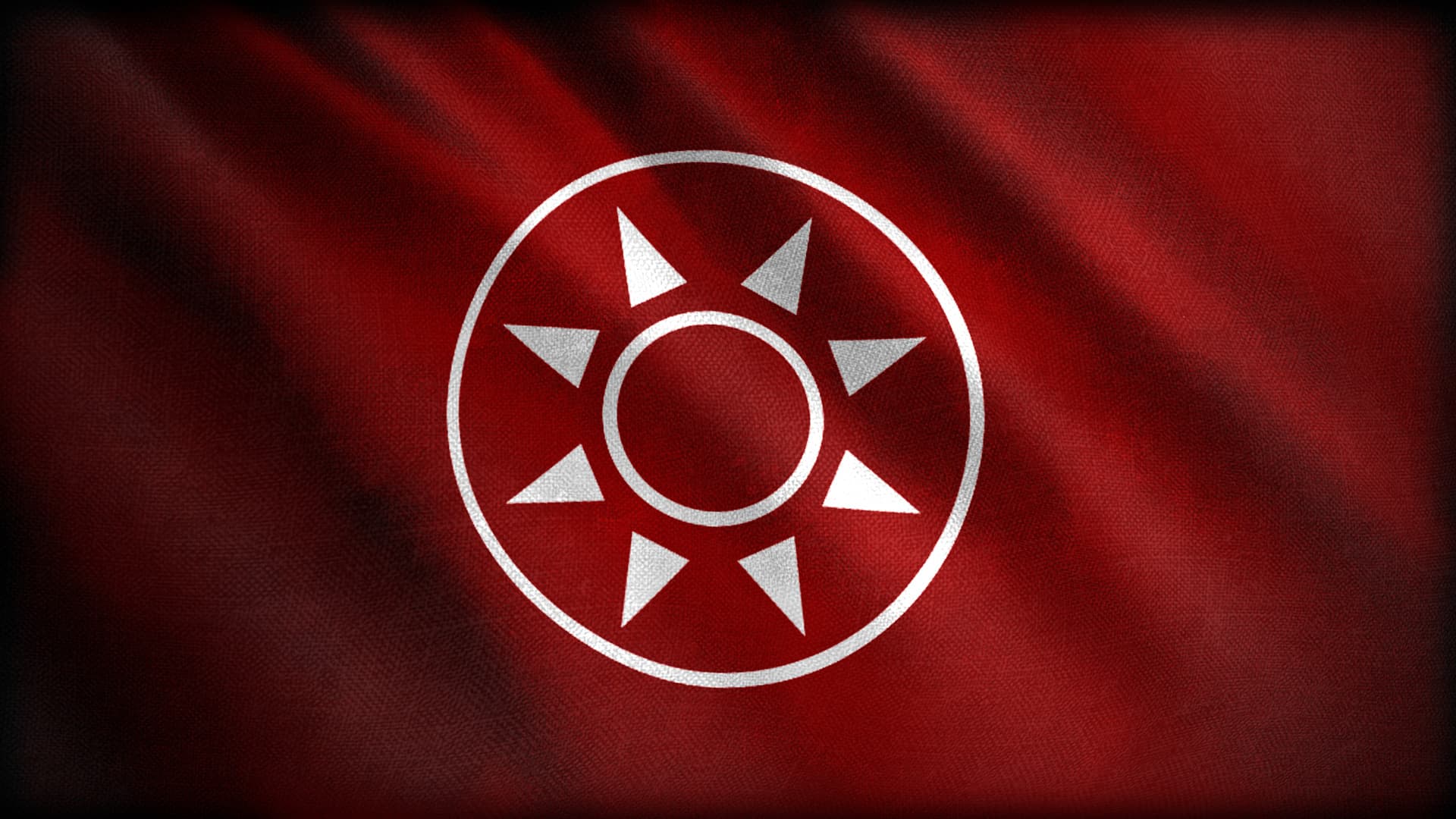
Special thx to Seicig from AOE4 official forum.
Majapahit Empire
Navy, Spice Trade, GunpowderDifficulty: 3/3
Bonuses
- Fishing Boats move 10% faster.
- Docks have double the line of sight.
- Coastal trade houses are revealed.
- Tradeship grants the same amount of wood as gold. Gets War-Junk in Feudal Age. (as long as the french get their hulks)
- Unique Building: Fish Traps
- Unique Building: Flotilla (replaces docks)
- Unique Building: Harbour
- Unique Unit: Karambit Warrior.
- Unique Unit: Madurese Ghali
- Unique Unit: Cetbang
The Spice must Flow: Every Successful trade run grants Spice-Demand. Spice-Demand gained depends on the distance traveled. Tradeship grants double the points compared to Traders:
- (100 Spices) Level 1 (Camphor): Reduces food cost of all units by 5%. Reduces the gold cost of all technology by 10%.
- (200 Spices) Level 2 (Galangal): Reduces food cost of all units by 10%. Reduces gold cost of all technology by 10%, Decreases research time by 10%. Decreases Production time by 5%
- (300 Spices) Level 3 (Clove): Reduces food cost of all units by 20%. Reduces gold cost of all Technology by 20%. Decreases research time by 20%. Decreases production time by 15%
- (500 Spices) Level 4 (Cinnamon): Requires having 15 or more active traders. Reduces food cost of all units by 40%. Reduces gold cost of all Technology by 30%. Decreases research time by 40%. Decreases Production time by 25%.
- (600 Spices) Level 5 (Nutmeg) extra-bonus: If another Civilization has 10 or more active traders, trading with your Trade/Dock, It grants them reduced food cost of all their units by 20%. Decreased production time by 15%.
Unique Landmarks Feudal Age
- Candi Gumpung: Increases movement speed for traders and trade ship by 25%. Traders are able to trade both ways. Gaining Spice Demand both to and from a Market and trades 50% of its value to a market.
- Kalasan Temple: Increases gathering speed from farms by 20%, Karambit Warriors now only takes 0.5 population cost. Karambit Warriors are produced 100% faster from the landmark.
Castle Age
- Ratu Boko: Functions as a keep. All buildings automatically repair themselves (20HP per second)
- Prambanan Temple: Functions as a Monastery. Relic stored in this building grants 1 Spice-Demand every 2 seconds. Instead of Gold (Which can store up to 2 relics)
Imperial Age.
- Rumah Gadang: Docks or Markets within its influence increase the production of traders and trade ships by 300%, Reduce the population cost of ships by 1 (To a minimum of 1).
- Bajang Ratu: Grants unique technologies. (See Technology section)
Wonder:
- Borobudur
Unique Buildings:
- Fish Traps (I, 75W): Fishing boats can construct fish traps at sea, providing them a constant supply of fish to fish from but at a 20% reduced gathering speed.
- Flotilla (II, 150W): Functions as a Dock, however, it can be moved on water and able to be deployed anywhere there is water. Functioning as a mobile dock.

Kabang (Ship/Homes of the Sea Nomads)

Flotilla when Deployed. (Small Sea Nomad village)
- Harbour: (III, 400W, 400S): Doubles as a Dock and a Keep, able to garrison up to 10 naval units. Can only be constructed at shore tiles. Benefits from Keep upgrades.
Unique Units:
- Karambit Warrior (II, 40F 15G): Very cheap but weak, fast-producing infantry, able to easily swarm the enemies.
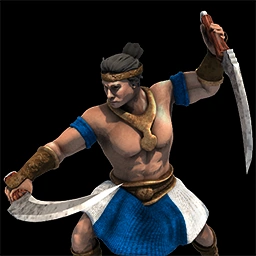
AoE2 Depiction. (oversized knives and wrong grips)
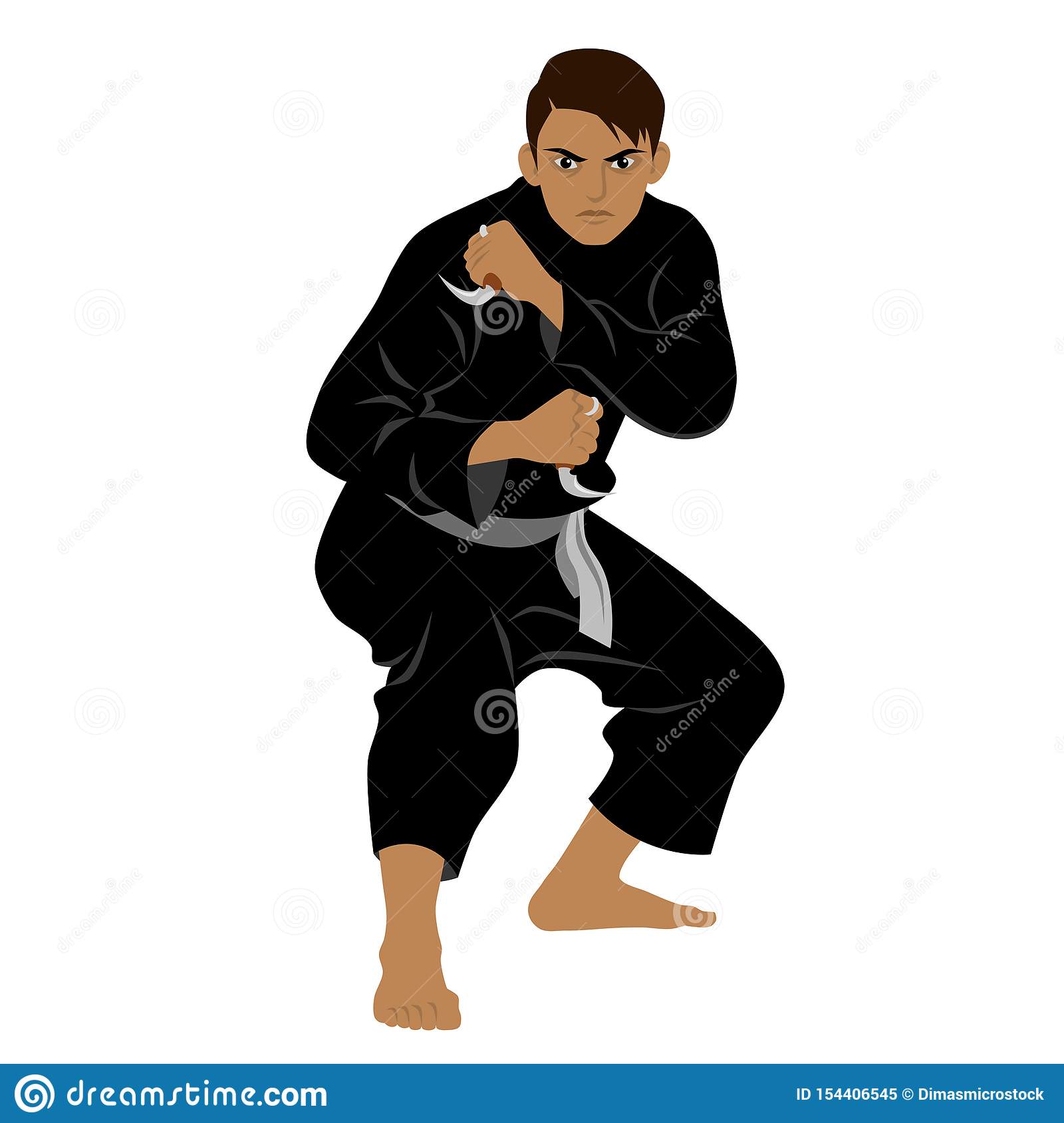
More correct usage of Karambit knives
- Madurese Ghali (III, 400W 220G): Powerful warship/transport, equipt with swivel guns, fires additional shots alongside its main armament. Is able to transport up to 20 units.
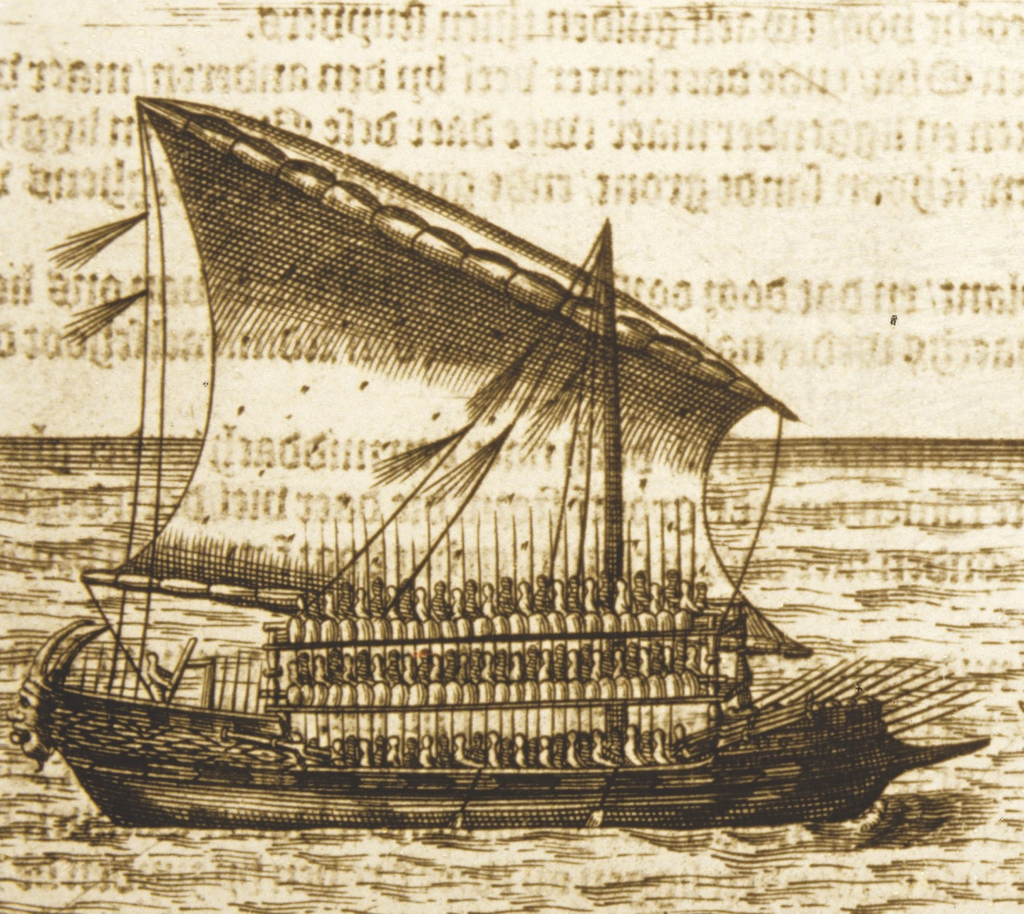
Galley of Madura, Mainly fought boarding combat, hence the extra platforms
- Cetbang (IV, 250W 250G): A very long-range Gunpowder siege unit, but mediocre against Siege and weak against Buildings.
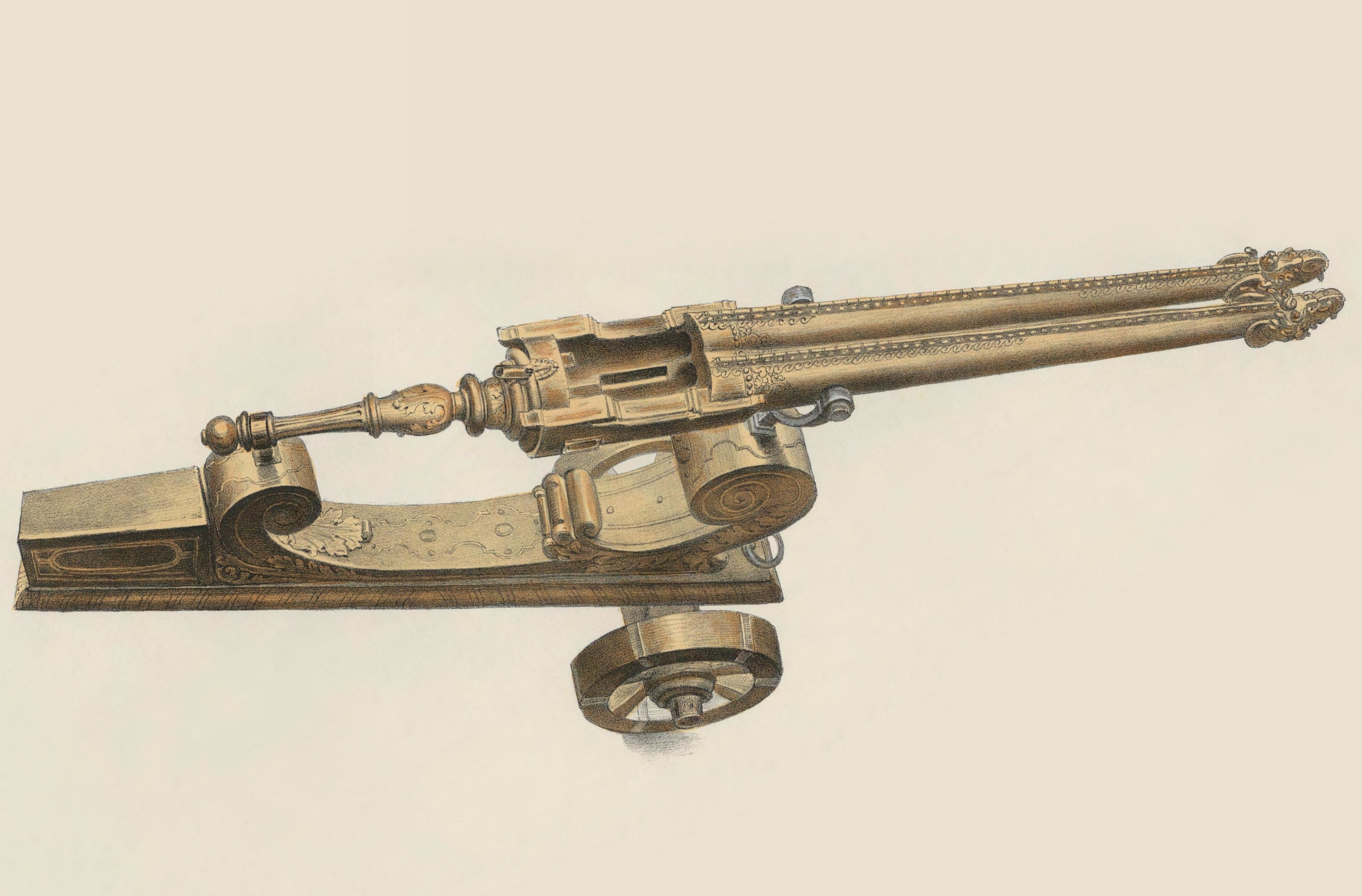
Double Barreled Cetbang. It goes Bang bang.
Technologies:
- Pencalang (I, 50W 50G): Increases view range by fishingboats and trade ships by +4 tiles
- Kampung (II, 150F 100G): Houses adjacent to a Dock, Mill, Lumber, or Mining camp provide a +5 population.
- Emergency Repairs (II, 300W 50G): Naval units gain ability when used, healing +10HP every 2 seconds for 20 seconds. Upgraded at Dock.
- Jamu Medecine (II, 150F 150G): Villager and Karambit Warriors gain ability when used, heals 20% of their HP (120s cooldown)
- Tanja Sails (III, 200F 150G): Increases ships movement speed by 10%
- Wayang (III, 100F 150G): When a Villager is at 1% health, it ignores all damage for 1.5 seconds. Upgraded at TownCenter.
- Temple Complex (III, 200S 100G): Buildings and Walls within the vicinity of a Monastery take 20% less damage.
- Fortified Swivel Guns (IV, 400W 400G): Keeps and Towers now fire an additional Handcannon (Swivel Gun) shot.
- Double Barrels (IV, 300F 700G): Cetbang fires 2 shots instead of 1. Researched at Blacksmith.
- Java Arquebus (IV, 300F 700G): Hand Cannoneers gain increased range by +1 and +5 Attack. Research at University.
- Bhinneka Tunggal Ika (IV 1000G): Monks can cast convertion without the need for a Relic. Researched at Bajang Ratu landmark.
- Bhayangkara (IV 250F 250G): All infantry gain +1 attack, +1 armor and 10% increased attack speed. Researched at Bajang Ratu landmark.
- Rentaka (IV 500G): All ships now fire 2 additional Swivel Gunshots. Researched at Bajang Ratu Landmark.
- Quality Horses (IV 300F 300G): Cavalry gain 15% more HP. Researched at Bajang Ratu Landmark.
Additional Notes:
Architecture when it comes to architecture. I don’t know what to say. Well, I know what to say, but I don’t know where to begin. Short summary; They have a lot. Many, many different styles and technology even, all depending on what island and even where on the island.One thing in common is that they were mostly built on stilts, as this was the most efficient manner to keep the houses cool before the invention of AC. As well as keeping them dry during flood seasons. It also has an added effect of well keeping most creepy crawlies away from entering the house. But I digress. Majapahit and their predecessors were great builders and architects.Building countless of temples, both Hindu and Buddhist, as well as Mosques when Islam came to the islands. They also built their unique Temples as the Buddhist and Hindu religion got merged, known as Candi. These can be found on countless islands and varied designs. Many of them are built well enough to resist earthquakes, volcanoes, and typhoons.Their architecture would be very varied, one could simulate them by having each house’s design be very different from each other. And while aging up, they change again. This way one could add as many of the house types known as Rumah Adat.
Naval units: The Junk originally comes from this part of the world. The people of this area were masters of the water, having designed countless different types of ships specialized in different tasks. Ocean-going vessels were able to travel across the Indian ocean over to Africa and back. Long before the first Portuguese galleons. But they were also very quick to adopt new technology that would benefit their ocean-going vessels at any point. Which leads to interesting designs for the ships of the Majapahit.While they could vary drastically depending on what part of the empire they came from, or were built.They would look somewhat like a blend between Chinese junk, a European galley, travel, and an Arab ship.With sideways almost triangle-style sails giving them the ability to travell upwind.With hulls reminiscence of a mix between a European and an Asian style ship.It is also speculated that some of them had outriggers as depictured in some temple carvings. But it is a claim that is disputed.Regardless, they have many, many well-documented ships from the era one could get inspiration from.
Example of the few of the many varied designs of ships employed by the Majapahit Empire
Language progression: Ok, this is going to be the most difficult one. The Majapahit was an extremely diverse empire. With multiple different people groups, ethnicities, and religious influences. Each of these has its own local language.The best choice would be to let them speak old Javanese, known as Kawi. Eventually developing into middle and then modern Javanese.Kawi isn’t an extinct language and is interestingly enough still used in some wedding ceremonies in Java. One could also in order to show the Diversity of this empire, and allowing different units to speak their own local language.Such as the Madurese Galley, where the crew consisted of the Madurese people, who had their own language. But this would require some extra effort but would be a very fantastic addition.
Landmark references:
Candi Gumpung:
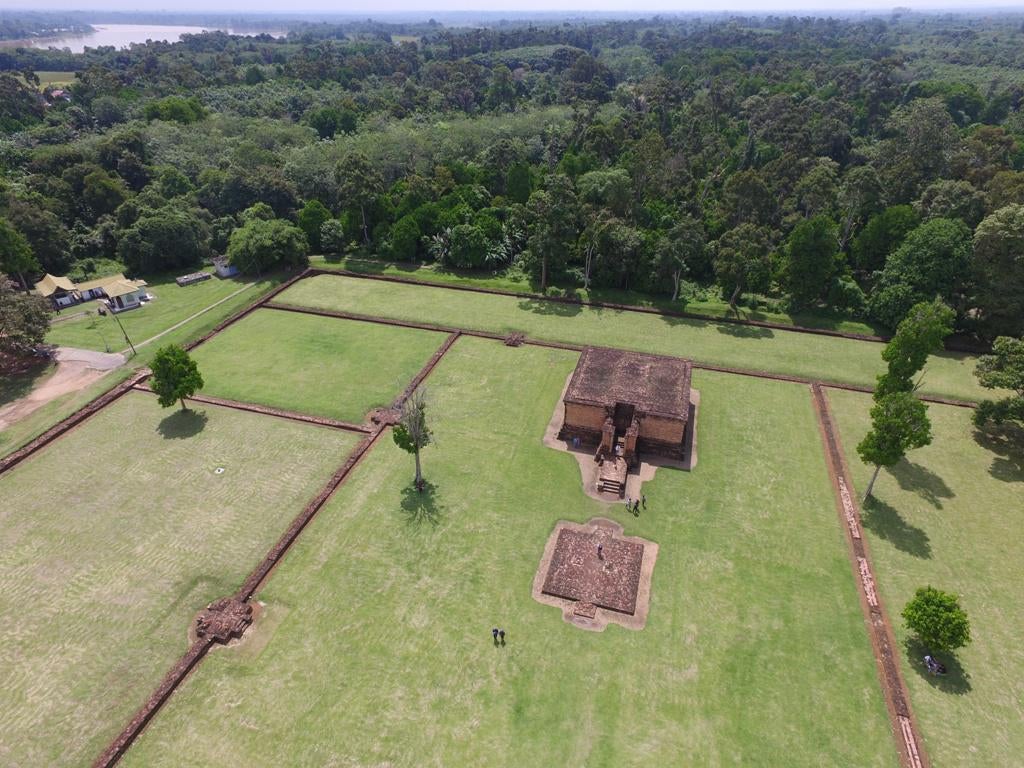
Remnants of the temple and its complex
The start of the rise of the kingdom of Melayu can be dated to 1025 when the Indian kingdom of Chola attacked and destroyed the capital of the Sumatran maritime empire of Srivijaya. This allowed a number of smaller Sumatran polities to expand their political and economic influence. During the twelfth and thirteenth centuries it seems that from its estuarine river basis along the Batang Hari, Melayu became the dominant economic power in Sumatra. The substantial archaeological remains at Muaro Jambi suggest that this may have been the site of the Melayu capital.
According to the Kalasan inscription dated 778 AD, written in Sanskrit using Pranagari script, the temple was erected by the will of Guru Sang Raja Sailendravamçatilaka (the Jewel of Sailendra family) who succeeded in persuading Maharaja Tejapurnapana Panangkaran (in another part of the inscription also called Kariyana Panangkaran) to construct Tarabhavanam, a holy building for the goddess (boddhisattvadevi) Tara. In addition, a Vihara (monastery) was built for Buddhist monks from the Sailendra family’s realm. Panangkaran awarded the Kalaça village to Sangha (Buddhist monastic community) According to the date of this inscription, the Kalasan temple is the oldest of the temples built in the Prambanan Plain.
Ratu Boko means “Stork King”, it is unclear what the original name of this site was, but it was built around the 9th century, rumored by King Boko, who was a legendary character known from popular folklore of Loro Jonggrang. This folklore connects the Ratu Boko Palace, the Durga statue in Prambanan temple (which is identified by local folklore as Loro Jonggrang), and the origin of the Sewu temple complex nearby. Prince Bandung Bondowoso loved Princess Loro Jonggrang, the daughter of King Boko, but she rejected his proposal of marriage because Bandung Bondowoso had killed King Boko and ruled her kingdom. Bandung Bondowoso insisted on the union, and finally, Loro Jonggrang was forced to agree to a union in marriage, but she posed one condition: Bandung must build her a thousand temples in one night. He entered into meditation and conjured up a multitude of spirits (genies or demons) from the earth. They succeeded in building 999 temples. Loro Jonggrang then woke her palace maids and ordered them to begin pounding rice. This awoke the roosters, which began to grow. The genies, hearing the sound of morning, believed the sun was about to rise and so disappeared back into the ground. Thus the prince was fooled, in revenge, he cursed the princess and turned her into a stone statue. According to the traditions, she is the image of Durga in the north cell of the Shiva temple at Prambanan, which is still known as Loro Jonggrang (“Slender Maiden”).
Prambanan Temple:
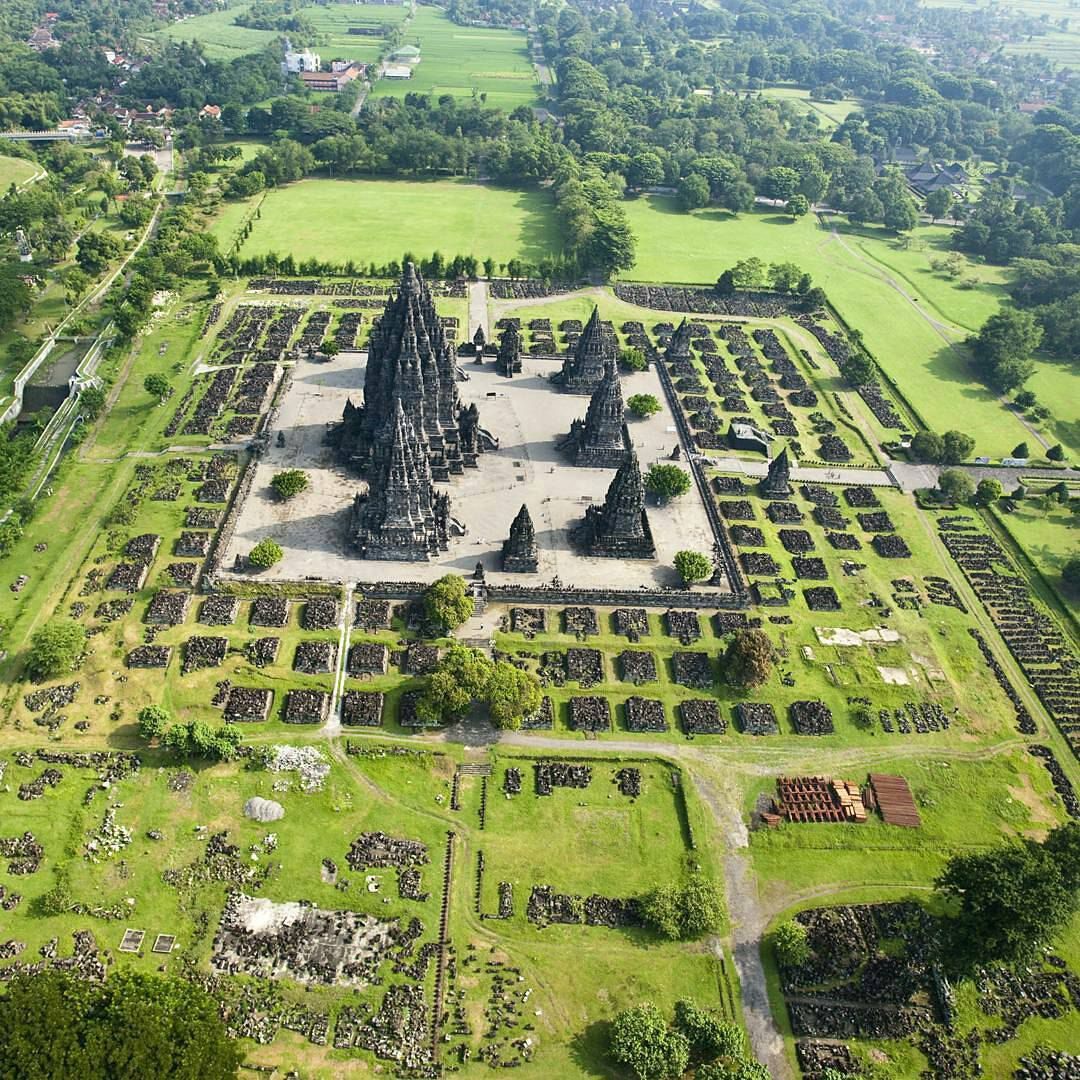
Rival to the Borobudur
This is one of the largest Hindu temples in the world, second to Angkor Wat. Built by the Sanjaya Dynasty. Theory suggests that the construction of Prambanan probably was meant as the Hindu Sanjaya Dynasty’s answer to the Buddhist Sailendra Dynasty’s Borobudur and Sewu temples nearby. Which means to mark the return of the Hindu Sanjaya Dynasty to power in Central Java after almost a century of Buddhist Sailendra Dynasty domination. Nevertheless, the construction of this massive Hindu temple did signify a shift of the Medang court’s patronage; from Mahayana Buddhism to Shaivite Hinduism.
Rumah Gadang:

Pagaruyung Palace built in the 17th century.
Rumah Gadang are the traditional homes of the Minangkabau in West Sumatra, Indonesia. The architecture, construction, internal and external decoration, and functions of the house reflect the culture and values of the Minangkabau. A Rumah Gadang serves as a residence, a hall for family meetings, and for ceremonial activities. In the matrilineal Minangkabau society, the Rumah Gadang is owned by the women of the family who live there; ownership is passed from mother to daughter. The houses have dramatic curved roof structures with multi-tiered, upswept gables. Shuttered windows are built into walls incised with profuse painted floral carvings. The term Rumah Gadang usually refers to the larger communal homes, however, smaller single residences share many of its architectural elements
Bajang Ratu:

Capital of the Majapahit empire
Bajang Ratu in Javanese literally means ‘dwarf or defect monarch’. Folk tradition links the gate with Jayanegara, the second Majapahit king, the successor to Kertarajasa Jayawarddhana, founder of the Majapahit Empire. According to tradition, Jayanegara fell from the gate as a child, causing defects to his body. The name probably also means ‘little monarch’, as Jayanegara ascended to the throne at a young age. Historian connects this gate with Çrenggapura (Çri Ranggapura) or Kapopongan of Antawulan (Trowulan), the shrine mentioned in Nagarakertagama as the dharma place (holy compound) dedicated to King Jayanegara during his death on 1328.
There are no known records of construction or the intended purpose of Borobudur. The duration of construction has been estimated by comparison of carved reliefs on the temple’s hidden foot and the inscriptions commonly used in royal charters during the 8th and 9th centuries. Borobudur was likely founded around 800 AD. This corresponds to the period between 760 and 830 AD, the peak of the Sailendra dynasty’s rule over the Mataram kingdom in central Java when their power encompassed not only the Srivijayan Empire but also southern Thailand, Indianized kingdoms of the Philippines, North Malaya (Kedah, also known in Indian texts as the ancient Hindu state of Kadaram).
The construction has been estimated to have taken 75 years with completion during the reign of Samaratungga in 825. Borobudur lay hidden for centuries under layers of volcanic ash and jungle growth. The facts behind its abandonment remain a mystery. It is not known when active use of the monument and Buddhist pilgrimage to it ceased. Sometime between 928 and 1006, King Mpu Sindok moved the capital of the Medang Kingdom to the region of East Java after a series of volcanic eruptions; it is not certain whether this influenced the abandonment, but several sources mention this as the most likely period of abandonment. The monument is mentioned vaguely as late as c. 1365, in Mpu Prapanca’s Nagarakretagama, written during the Majapahit era and mentioning “the vihara in Budur”. Soekmono (1976) also mentions the popular belief that the temples were disbanded when the population converted to Islam in the 15th century.
The monument was not forgotten completely, though folk stories gradually shifted from its past glory into more superstitious beliefs associated with bad luck and misery. Two old Javanese chronicles (babad) from the 18th century mention cases of bad luck associated with the monument. According to the Babad Tanah Jawi (or the History of Java), the monument was a fatal factor for Mas Dana, a rebel who revolted against Pakubuwono I, the king of Mataram in 1709. It was mentioned that the “Redi Borobudur” hill was besieged and the insurgents were defeated and sentenced to death by the king. In the Babad Mataram (or the History of the Mataram Kingdom), the monument was associated with the misfortune of the crown prince of the Yogyakarta Sultanate in 1757. In spite of a taboo against visiting the monument, “he took such pity on ‘the knight who was captured in a cage’ (i.e. the statue in one of the perforated stupas) that he could not help coming to see his ‘unfortunate friend’”. Upon returning to his palace, he fell ill and died one day later.
Unique Building:
Fish Traps:
- Health: 300Fish Traps functions similar to a Farm at sea, fishing boat can construct a Fish trap and collect fish at a reduced gathering rate.
Flotilla:
- Health: 1500Functions as a dock, can be moved similar to a mongol building, but only in water.
Harbour:
- Health: 5000Double as a Dock, able to produce ships. But also Functions as a Keep, able to garrison up to 10 naval vessels. Benefits from Keep upgrades. (Boiling oil, Springald and cannon emplacement)
Unique Unit:
Karambit Warrior:
- Health: 50/75/90
- Attack: 5/6/7 Melee(Karambit) (2 Burst Attack); 14/16/20 (tortch);
- Rate of fire: 2s (Karambit); 2s (Tortch);
- Armor: 0
- Pierce Armor: 0
- Speed: 1.3 tiles/s
Cheap infantry unit with a very short production time. Can quickly amass and overwhelm the enemies with numbers.
Cetbang:
- Health: 250
- Attack: 35 Ranged (Cetbang);
- Rate of fire: 2s Ranged (Cetbang);
- Range: 13 (Cetbang)
- Armor: 0
- Pierce armor: 0
- Speed: 0.65 tiles/s
Long-range gunpowder siege unit that is strong against dealing with ranged units and infantry. Not so strong against siege weapons and does very little damage to buildings.Is able to be upgraded with an extra barrel, doubling its firepower.
Mudharese Ghali:
- Health: 900
- Attack: 50 Ranged (1 Ballista on each side); 20 Ranged (Swivel Guns, 3 Burst attacks).
- Rate of fire: 3.25s Ranged (Ballista); 3.75s (Swivel Gun)
- Range: 5 (Ballista); 4 (Swivel guns);
- Armor: 0 Pierce Armor: 5 Speed: 1. tiles/s
A special type of Galley used by the Mudharese people who serve as a part of the Majapahit navy armed with additional Swivel guns for extra firepower.
Write-up:
This was a very fascinating civilization to study. Incredibly rich in history, and far more impactful on world history than it was first seemed to be. Funnily enough, it also does make the sci-fi story of Dune and their obsession with spice seem almost realistic. During the medieval era, Spice was the world’s addiction. And one of the main sources of the spice was exactly from this Empire and its predecessors. Both European kingdoms and empires, Arab and Indian, as well as the Chinese and Mongol empires, had a massive interest in the trade coming from this region. This also explains the extreme diversity and technological influence this region developed.
While the Majapahit was a rather short-lived empire in itself. It never really died off, as it pretty much laid the foundation and identity of this region that still persist today. The Achievement this empire managed to make is not to be underestimated. Consider the Malay Archipelago, also known as Nusantara. Consists of the accumulated landmass of Europe. And was as Diverse in ethnicity and culture as Europe. And somehow the Majapahit managed to unite them all into one nation. That is close to the equivalent of someone being able to unite the entirety of Europe with all its different people groups, cultures, and ethnicity. Due to this, it made them extremely rich and influential. So much so was the importance of the Spice that it also marked this part of the region heavily for Colonisation, which quickly happened once the Dutch east indies company arrived around the 16th century.
Regardless, I ended up having to redo this entire Civilization concept. As I did want to try to pay homage to the rich diversity of this region. But the more I tried, the more cluttered this civ became. And even more complicated. However, it has also become a sensitive topic. As it does cover a lot of different ethnicities and cultures. Today, many are separate and individual countries. It would be very rude to call Javanese people Malay, nor would the Malay people wish to be grouped with Indonesians. Both had gone their separate ways during the end of the Majapahit Empire. And in all honesty, has most likely already been separate even during the empire, As the empire mostly consistsMaritime of a union of Tributary states rather than a single Imperial identity.
This Civilization is mainly a Maritime civilization, but I think it shud be able to play well enough on Land maps, especially hybrid ones. While also trying to emphasize the importance gainsTrade had on this empire, I wanted to simulate that with the Spice-Trade trait. This trait sorta functions similarly to the RUS Bounty function. Where instead of collecting Bounty from wild animals. Here, every successful trader collects Spice-Demand. The amount of Demand gained depends on the length of the trade route, parallel to how the trader’s resource gain. But here, one should be able to be willing to risk traders. As Spice-Demand is a permanent buff up to level 3. So if you can reach this point, it doesn’t matter if your trade, later on, gets blocked out completely in the game. It also makes it important for the opponent to maybe focus on trying to lock down potential Trade. Which then would force the fights into the corner of the maps rather than the center and around the landmarks.
This is why I wanted to give them the Karambit warrior and have it perform similarly to the ones from AOE2. A cheap, fast, infantry that is able to be produced fast and be able to quickly be dispatched into dealing with raids on the trade routes, or alternatively, does a counter-raid on the opponent, forcing the opponent to withdraw. I also wanted to try to simulate the great interest other empires and nations had in trading with the Majapahit if the Majapahit is able to reach the max level of their Spice-Trade bonus. When Friendly, and even opponent traders, start trading with a Majapahit market/dock. They also get a smaller form of the Spice Bonus applied to themselves, as long as they can keep enough active traders. This should make some interesting interaction, especially in FFA.
Well, this concludes my southeast Asian civilization focus! It’s been a very interesting journey. And I am very interested to hear from you, which of the SEA-Civilization was the most interesting for you!
If you are interesting in reading my other Civilization concept here is a list:
Southeast Asia:
The Majapahit Empire
East Asia:
Europe:
Next up: The great Seafaring states. (Spain / Portugal / Dutch / Ottomans)

